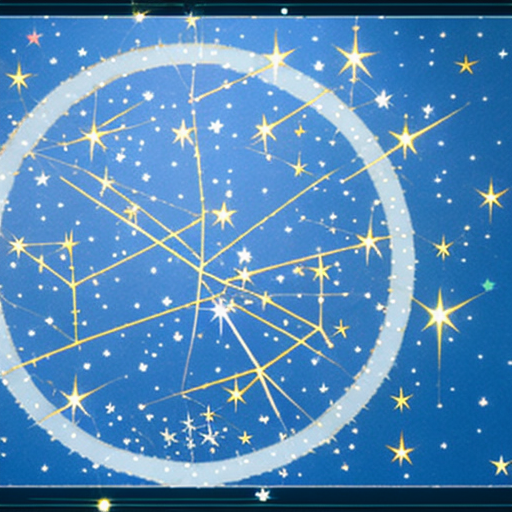Exploring the Beauty and Mystery of the Taurus Constellation
As we gaze up at the starry night sky, our eyes may naturally gravitate towards the well-known constellation of Orion, with its iconic three-star belt. But just a few degrees to the north lies another celestial wonder: the constellation Taurus. With its distinctive V-shaped star formation and its association with the mythological bull, Taurus is a captivating sight in the heavens. In this article, we will explore the history, cultural significance, and astronomical features of this stellar constellation. Prepare to be awed by the beauty and mystery of Taurus.

1. The Story of Taurus: A Constellation Steeped in Mythology
The Taurus constellation is one of the most recognizable in the night sky, having been described in ancient mythology and culture for thousands of years. According to Greek mythology, Taurus represents the form of the god Zeus when he disguised himself as a white bull to kidnap Europa, a princess. In another Greek legend, Taurus was the result of the god Dionysus transforming himself into a bull. In Egyptian mythology, Taurus was associated with the goddess Hathor, who was the deity of love and beauty.
The stories surrounding Taurus have also been told in other cultures. In Babylonian mythology, Taurus was believed to represent the bull that was sacrificed by the god Marduk to create the world. In Hindu mythology, Taurus was associated with the god Shiva, who was believed to have a third eye that emitted flames that could destroy anything in its path.
2. Unveiling the Mysteries of Taurus: A Closer Look at the Stars
- There are numerous stars within the Taurus constellation, with the brightest being Aldebaran, which is also called the “Eye of the Bull.”
- The Taurus constellation is located close to the Pleiades, a cluster of stars that have been an important cultural and astronomical symbol for various cultures around the world.
- Within Taurus, there is a star-forming region known as the Taurus Molecular Cloud, where new stars are constantly being formed and studied by astronomers.
When exploring the Taurus constellation, it is important to note that it is visible from both the northern and southern hemispheres, but the best viewing time is during the winter months in the northern hemisphere. With the right telescopes and equipment, researchers and amateur astronomers can uncover even more fascinating details and mysteries hidden within this ancient and mesmerizing constellation.
As we conclude our journey through the starry skies of the Taurus constellation, it’s impossible not to feel awed by the sheer majesty and wonder of the universe. From its towering bulls to its glittering clusters, Taurus offers us a glimpse into the mysteries of existence, reminding us that there’s so much more to the cosmos than we can ever hope to comprehend.
Whether you’re a seasoned astronomer or simply a starry-eyed dreamer, there’s something undeniably magical about the Taurus constellation. So the next time you find yourself gazing up at the night sky, take a moment to let the wonders of Taurus wash over you, and feel yourself transported to a world beyond our own. The stars may be out of reach, but their beauty and mystery are always within our grasp.




















